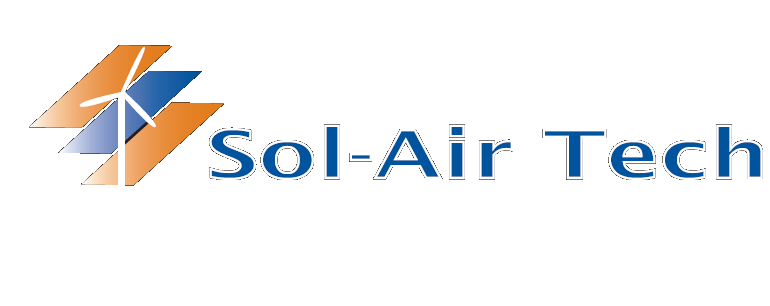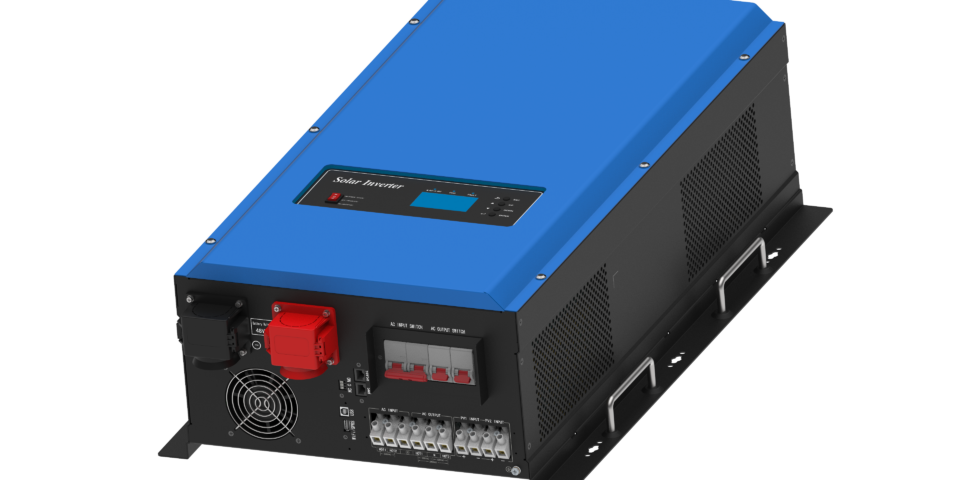What is a Hybrid Inverter
A Hybrid inverter is a device that manages and operates several energy sources all in the same device. A Hybrid Inverter can be connected to three energy sources: solar (solar panels), batteries and AC current coming from either the electricity grid or a generator.
Depending on the programming you choose, the Hybrid Inverter can prioritize the origin of the energy source: Solar, AC Current, Battery, in ascending or descending order. For example, if you have chosen solar as your main source and it stops, then the hybrid inverter takes its energy from AC current or batteries depending on what you have prioritized.
The primary purpose of an Inverter is to convert direct DC current into AC current. However, a Hybrid Inverter, given that it is connected to several energy sources, can switch from one source to another in a few microseconds without any power interruption.
When the energy source comes from the AC network, the inverter does not work, it simply passes the AC current. On the other hand, it continually checks the quality of the current and if there is too great a fluctuation or an electrical breakdown, the inverter transfers its energy source to the batteries without any power interruption.
The hybrid inverter is also equipped with two types of controller: an MPPT DC charge controller (energy from the solar panels) and an AC charge controller (energy from the grid or generator). Note that both can work at the same time.
Inverter for uninterrupted power supply current
An inverter, in the context of power outage prevention, is a crucial electrical device designed to ensure a constant power supply in the event of a failure of the main source of electricity. It serves as a protective measure against disturbances caused by power outages, blackouts or voltage fluctuations.
Operating on the principle of converting direct current (DC) to alternating current (AC), inverters facilitate the smooth transition from conventional energy sources to alternative energy reserves, such as batteries or power systems. renewable energy such as solar panels. When a power outage occurs, the inverter quickly detects the loss of input power and activates the energy stored in the connected batteries. This process ensures uninterrupted power supply to critical devices, appliances or systems.
Modern inverters often incorporate advanced technologies, including microprocessors and monitoring systems, that improve their efficiency and response time during outages. They also play a crucial role in stabilizing the power grid by managing fluctuations and ensuring consistent voltage levels.
Essentially, a inverter Hybrid acts as a protection against disruptions caused by power outages, contributing to greater reliability and resilience of electrical systems. Whether for residential, commercial or industrial purposes, inverters are essential components for maintaining essential operations and minimizing the harmful effects of power outages.
Inverter Foruninterrupted power supply of current: concept
The concept of a inverter during a power outage serves to prevent power outages and ensure continuous power supply by seamlessly switching between mains power and stored energy.
To avoid power outages, a system ofinverter for power cut Current can be integrated into energy storage solutions, such as batteries. During periods of stable grid power, the inverter charges the batteries, storing excess energy for later use. In the event of a power outage, the inverter quickly detects the disruption and seamlessly switches to using stored energy from batteries to continue powering essential loads.
This concept not only guarantees continuous power supply during outages and microcuts, but also offers benefits such as peak load shaving, where stored energy can be used during periods of high demand, reducing pressure on the network. Additionally, when combined with renewable energy sources such as solar panels, the systempower outage inverter contributes to a more sustainable and resilient electricity infrastructure.
Essentially, the inverter-based approach to preventing power outages provides a reliable backup power solution that protects against interruptions, improves grid stability, and promotes efficient energy consumption, ultimately leading to an ecosystem more resilient and sustainable energy.
Utility :
One of the main advantages ofinverter for uninterrupted power supply current is its ability to provide uninterrupted power supply to essential loads. In the event of a power outage or micro-cut, the latter quickly detects the disturbance and switches to emergency power, thus avoiding disruption to vital services, industrial processes and critical infrastructure. This not only maintains operational continuity, but also protects sensitive electronic equipment from voltage fluctuations that often accompany power fluctuations.
For example, utility inverters play a central role in demand response strategies. During peak periods, they can feed excess electricity back into the grid, reducing pressure on the system. This improves network stability and reduces the risk of widespread outages.
Finally, it can be said that utility inverters are indispensable components in modern electrical systems, proactively avoiding power outages by facilitating smooth transitions between grid power and backup sources. Their ability to improve grid resilience, provide continuous power and support the integration of renewable energy, shows their vital role in ensuring a reliable and uninterrupted electricity supply.
Types:
L'inverter is available in different types, including single inverter, grid tied inverter and hybrid inverter. The inverter alone is an independent system primarily used in off-grid setups, such as remote areas or in emergencies. The grid-connected inverter is designed to synchronize with the main electricity grid, allowing excess energy generated by sources such as solar panels to be fed back into the grid. The hybrid inverter combines several features offering versatile solutions for uninterrupted power supply and optimized energy usage.
Incorporating advanced technologies, the modern inverter comes with features such as remote monitoring, intelligent load management and surge protection. It plays a central role in preventing power outages, ensuring smooth transitions between power sources and contributing to energy efficiency. With the growing importance of reliable power supply, investing in a system of inverter for a uninterrupted power supply current High-quality materials tailored to specific needs can effectively mitigate the impact of power interruptions and improve overall energy resilience.
How to avoid a power outage
Ensuring an uninterrupted power supply is essential to avoid disruption caused by a UPS failure. To mitigate this risk, several measures can be taken.
Regular maintenance plays an essential role. Regularly inspecting the inverter system for signs of wear, loose connections, or dust accumulation can prevent potential failures. Proper ventilation is essential to keep the inverter cool, preventing overheating that can lead to malfunction.
Invest in a inverter for (uninterrupted power supply) current high quality from a reputable manufacturer is crucial. Taking shortcuts with cheaper alternatives may initially save money, but may result in higher failure rates in the long run.
Implementing redundancy can also be a prudent approach. Having a backup power source, like a generator, along with a reliable uninterruptible power supply (UPS), can bridge the gap in the event of a UPS failure.
Monitoring systems can provide real-time data on inverter performance. Modern technology allows for remote monitoring, quickly alerting users of any irregularities, allowing rapid intervention before a breakdown occurs.
From this, it can be deduced that to avoid inverter failures, it requires proactive measures such as regular maintenance, adequate ventilation, investing in quality, planning for redundancy and using monitoring systems. These steps collectively contribute to a stable and uninterrupted power supply, minimizing disruptions and maintaining smooth operations.

